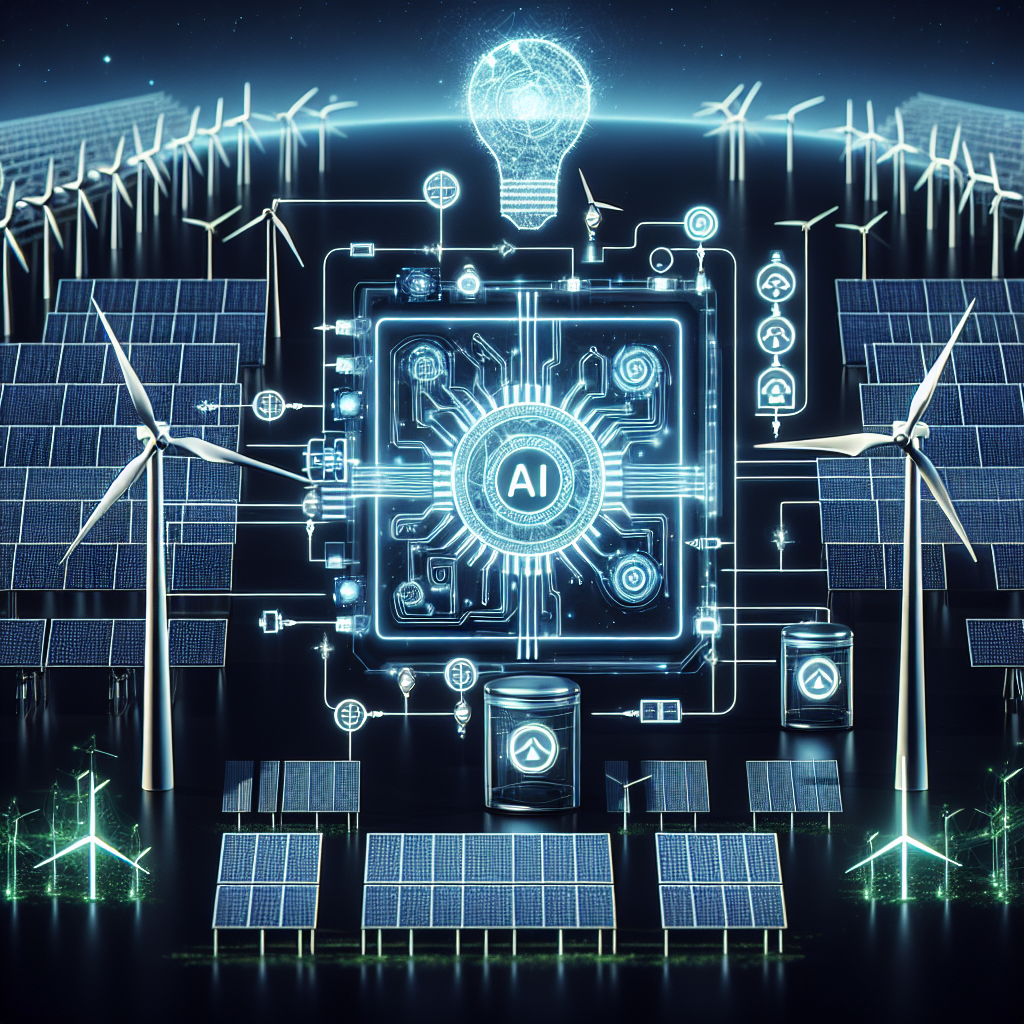AI-Driven Solutions for Enhancing Microgrid Performance in Renewables
Microgrids are becoming increasingly popular as a way to improve energy efficiency and resiliency in the face of an ever-changing energy landscape. These small-scale power systems can operate independently or in conjunction with the main power grid, providing reliable energy supply to local communities. With the rise of renewable energy sources such as solar and wind power, microgrids are playing a crucial role in integrating these intermittent resources into the grid.
However, managing a microgrid with renewable energy sources can be challenging due to their variability and unpredictability. This is where artificial intelligence (AI) comes in. AI-driven solutions are being developed to optimize the performance of microgrids, ensuring a reliable and stable energy supply while maximizing the use of renewable energy sources.
AI algorithms can analyze vast amounts of data in real-time, enabling microgrid operators to make informed decisions on energy production, storage, and distribution. By using AI-driven solutions, microgrids can adapt to changing conditions and optimize their performance to meet the demands of the grid and local community.
One of the key benefits of AI-driven solutions in microgrids is their ability to forecast energy generation from renewable sources. By analyzing historical data, weather patterns, and other factors, AI algorithms can predict how much energy will be generated by solar panels or wind turbines in the coming hours or days. This information can then be used to optimize the operation of the microgrid, ensuring that energy is produced and stored efficiently.
AI can also help in optimizing the use of energy storage systems in microgrids. By analyzing data on energy consumption patterns, AI algorithms can determine the best times to charge and discharge batteries or other energy storage devices. This allows microgrid operators to maximize the use of renewable energy sources and reduce reliance on fossil fuels during peak demand periods.
Furthermore, AI-driven solutions can improve the overall efficiency of microgrids by optimizing energy distribution and demand response. By analyzing data on energy consumption, grid conditions, and other factors, AI algorithms can determine the most efficient way to distribute energy within the microgrid. This can help reduce energy waste and lower operating costs, making microgrids more sustainable and cost-effective.
In addition to optimizing energy production and distribution, AI-driven solutions can also enhance the resilience of microgrids. By continuously monitoring grid conditions and detecting potential issues, AI algorithms can help microgrid operators identify and address problems before they escalate. This can help prevent outages and disruptions, ensuring a reliable energy supply for local communities.
Overall, AI-driven solutions are revolutionizing the way microgrids operate, making them more efficient, reliable, and sustainable. By harnessing the power of AI, microgrid operators can optimize their performance, integrate renewable energy sources, and enhance their resilience in the face of changing energy dynamics.
FAQs:
Q: How does AI improve the performance of microgrids with renewable energy sources?
A: AI algorithms can analyze vast amounts of data in real-time, enabling microgrid operators to make informed decisions on energy production, storage, and distribution. By using AI-driven solutions, microgrids can adapt to changing conditions and optimize their performance to meet the demands of the grid and local community.
Q: Can AI help in forecasting energy generation from renewable sources?
A: Yes, AI algorithms can analyze historical data, weather patterns, and other factors to predict how much energy will be generated by solar panels or wind turbines. This information can then be used to optimize the operation of the microgrid, ensuring that energy is produced and stored efficiently.
Q: How does AI optimize energy storage systems in microgrids?
A: By analyzing data on energy consumption patterns, AI algorithms can determine the best times to charge and discharge batteries or other energy storage devices. This allows microgrid operators to maximize the use of renewable energy sources and reduce reliance on fossil fuels during peak demand periods.
Q: How does AI enhance the resilience of microgrids?
A: AI algorithms can continuously monitor grid conditions and detect potential issues, helping microgrid operators identify and address problems before they escalate. This can help prevent outages and disruptions, ensuring a reliable energy supply for local communities.
Q: What are the overall benefits of AI-driven solutions for microgrids?
A: AI-driven solutions can optimize energy production and distribution, improve efficiency, reduce energy waste, lower operating costs, integrate renewable energy sources, and enhance the resilience of microgrids. By harnessing the power of AI, microgrid operators can make their systems more efficient, reliable, and sustainable.

